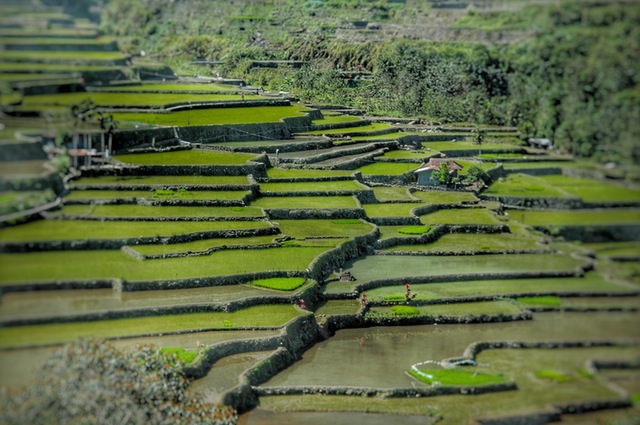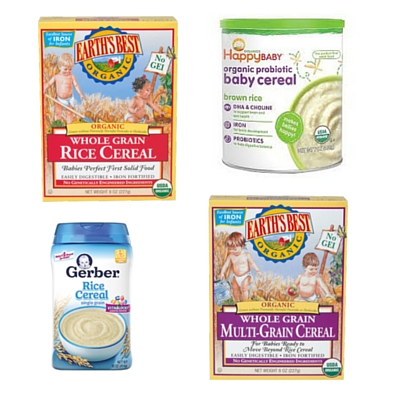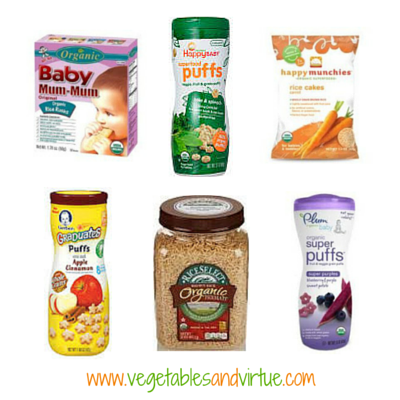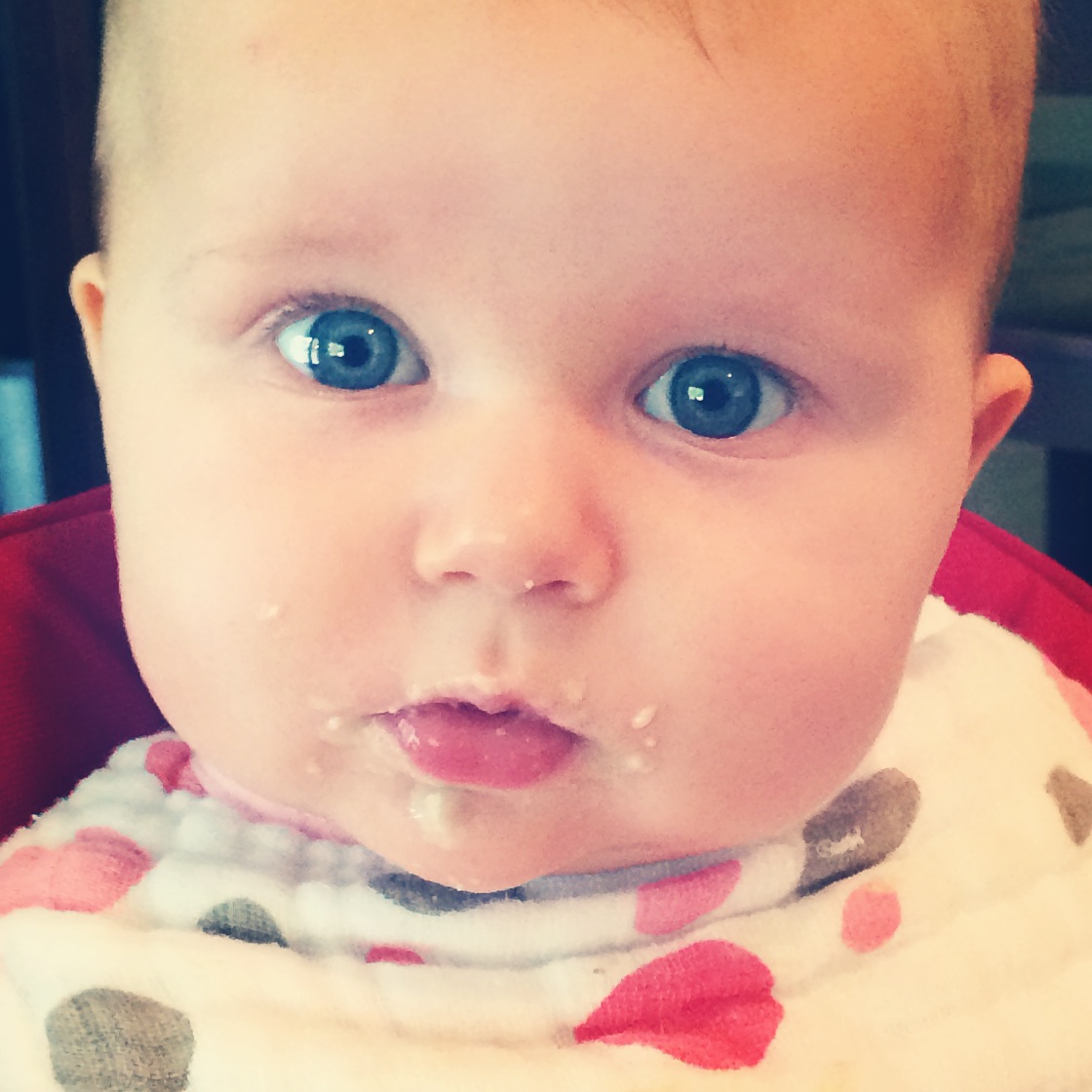Infant Rice Cereal and Arsenic
There is nothing worse that fear mongering geared towards new mothers.
When we have so much to process and apply to our infant's well-being already, the last thing we need is confusing noise compared to evidenced-based nutrition. Especially when it comes to conversation about high levels of heavy metals like arsenic in every day staples for infants like rice cereal.
FDA Press Release
This past April, the Food and Drug Administration (FDA) announced a press release about their efforts to reduce the amount of arsenic in infant rice cereal. This followed after the European Commission set standards for the amount of arsenic allowed in rice itself. The FDA has focused its efforts around infant rice cereal specifically, based on data that shows rice consumption is at its highest (relative to body weight) at eight months of age.
I have been following the discussion on arsenic content in rice and rice-based products for years before ever becoming a parent, as it has long been a hot topic among the gluten-free community. As people who consume more rice-based products (than those who are not on gluten-free diets), there has been much debate over how much rice is "acceptable" on a gluten-free diet.
As a parent, what you are probably asking is,
How much infant rice cereal is safe for my baby to eat?
Let's break down our question:
How much infant rice cereal is safe for my baby to eat?
According to parent and pediatrician Dr. Claire Chehrazi, "the amount of arsenic in rice is equivalent to one teaspoon of arsenic in the size of an Olympic sized pool." This may sound trivial, but she advises that we consider "the potency of the poison" before we made a decision regarding risk, especially among our youngest eaters.
Arsenic exists in the earth's crust. Since crops grown in the ground are exposed to the earth's crust, they absorb arsenic and will naturally have higher levels of arsenic than most non-plant based food. Depending on how a food is grown, the amount of arsenic in that product can vary. Since rice is grown in large rice fields full of water, arsenic is present not only in the soil but also becomes part of the rice's composition from the exposure to arsenic in water as well.

Now that we understand there is little we can do to remove arsenic from rice itself (other than with this method), it is important to recognize that different forms of rice contain varying amounts of arsenic. This helps to elucidate that there is not a threshold of this many teaspoons or Tablespoons of infant rice cereal allowed per day, but rather what are your best options and how to include them in amounts considered safe to your child's size.
How much infant rice cereal is safe for my baby to eat?
Rice cereal comes in a variety of types. From white rice to brown and all the multi-grain options that include rice as an ingredient, some parents may be confused about which rice cereal is considered the "best?

For a brief review, white rice as a whole has lower amounts of arsenic because arsenic is most concentrated in the germ. The germ is the part of the grain that is removed when changing brown rice (a whole grain) to white rice (a refined grain). While the amount of arsenic may be reduced with the processing of white versus brown rice, the nutritional content of white rice is degraded as well. Brown rice will offer more fiber, vitamins, and minerals for marginal amounts more arsenic. Data also shows that arsenic levels are similar between organic rice and conventionally grown rice.
So organic may not make a big different in the argument of arsenic, but what does? Should parents minimize exposure to arsenic and buy white rice infant cereal instead of brown? Or, for the nutritional benefits of added fiber, vitamins, and minerals, should we marginalize the varying amount of arsenic and opt for brown rice infant cereal?
Without understanding the underlying safety standards now put in place for all of these options, some may be ready to throw the baby out with the bath water. But don't refuse brown nor white rice as options just yet.
How much infant rice cereal is safe for my baby to eat?
The FDA evaluated over 1,300 samples of infant rice cereals for arsenic. Of the infant rice cereal on the market in 2014, nearly half of samples tested (47 percent) met the FDA's proposed action level (100 parts per billion (ppb)) for arsenic. Now with the FDA's proposed "action limit" officially in place, consumers can rest assured that the amount of arsenic must be at or below this level in order to be made available in the mainstream marketplace. This makes all infant rice cereal products - from brown or white rice - technically "safe" from the standpoint of the FDA.
Eating too much of any one type of food, however, can come with risks. Infant rice cereal is no exception. It is safe to consume this rice-based product, but all parents should consider varying the grains in their infant's diet. By including other whole grains like wheat, bulgur, barley, millet, quinoa, amaranth, buckwheat, corn and oats, arsenic exposure is minimized while nutrition is maximized.
How much infant rice cereal is safe for my baby to eat?
It is a personal decision if and how much rice-based food you feel comfortable exposing your infant to. With the aforementioned information about the known exposure to arsenic and conflicting information about the health benefits to rice (brown specifically), it is a decision many parents look to experts to help them make in a more informed fashion.
Most scientists, professionals in the field of food safety, and dietitians alike agree that rice products, especially brown rice based, can have a place as part of a healthy diet. Dr. Claire Chehrazi shares openly that she has offered rice products in moderation to her child since 5 months of age. The American Academy of Pediatrics, advises that "parents offer their children a wide variety of foods, including other grains such as oats, wheat and barley, which will decrease their child’s exposure to arsenic from rice." Personally, I prefer to avoid traditional infant rice cereal while my daughters were/are infants and instead provide infant cereals made from oats or multi-grain options. This affords me the opportunity to include similar vitamins, minerals, and iron-fortification from infant cereals, while also exposing our family to other brown rice based products that we tend to include in our diet.

Bottom Line
Put bluntly, a recent article by the International Food Information Council Foundation answers our question of "How much infant rice cereal is safe for my baby to eat?" simply and succinctly: "The best way to mitigate any concerns about arsenic is to eat diverse foods and follow the Dietary Guidelines for Americans."

